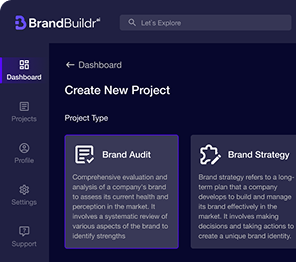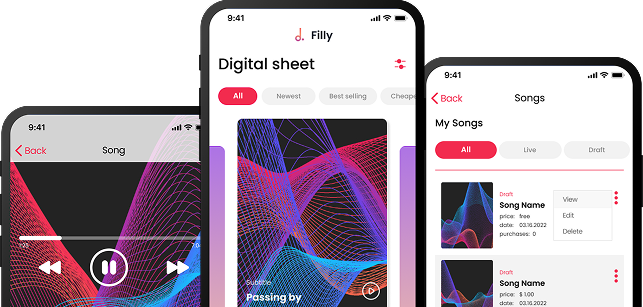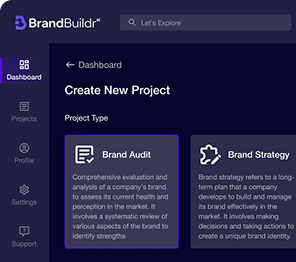So, you’ve got an app idea, maybe it’s the next Airbnb, the next Uber, or a tool that solves a really specific pain point for your industry. You’ve validated the problem. You’ve scribbled ideas on napkins, shared them with friends, and maybe even pitched them to a co-founder or investor.
Now comes the million-dollar question: should you build the full app?
The honest answer? Probably not, at least, not yet.
Building a complete app with every feature you’ve dreamed of might sound exciting, but it’s also time-consuming, expensive, and risky. What if users don’t need half the features? What if you solve the wrong problem? What if your idea is great, but the execution needs to pivot?
That’s where an MVP app comes in.
Some of today’s most iconic companies started small, really small. Airbnb? Just a basic website to list a few rentals. Dropbox? A demo video explaining what the app would do. Buffer? A landing page with a fake “Buy” button. These weren’t flukes, they were smart, intentional MVPs.
If you’re serious about building an app that works and grows, starting with an MVP might be the smartest decision you make
%20(1)%20(2)%20(1)%20(1).png)
What Is an MVP App?
Let’s break it down: MVP stands for Minimum Viable Product. But what does that mean in the context of apps?
An MVP app is a functional version of your idea that contains only the core features needed to solve the main problem for your target users. It’s not your full vision. It’s not loaded with every feature on your backlog. It’s lean, purposeful, and designed to help you learn quickly.
It’s the bridge between an idea and a real, scalable product.
The Purpose of an MVP App
Here’s what a well-built MVP helps you do:
- Test product-market fit: See if your idea resonates with real users.
- Launch faster: Get your app in users’ hands quickly.
- Reduce costs: Avoid spending months building features users won’t use.
- Validate before scaling: Make sure it’s worth building the full product.
- Attract investors: Demonstrate traction with actual usage data.
- Adapt quickly: Use feedback loops to iterate and improve.
It’s a strategy for learning, not just building.
Why You Shouldn’t Build the Full App Right Away
There’s a temptation to build everything at once. After all, your idea is ambitious, and that’s great. But full-feature builds are:
- Expensive: Development costs scale with complexity.
- Time-consuming: Full builds can take 6–12 months or more.
- Hard to test: More features = more moving parts = more room for bugs.
- Risky: You might be solving the wrong problem or talking to the wrong audience.
Startups fail for many reasons, but a top culprit is overbuilding too early.
You can avoid this by testing your assumptions through an MVP first.
Benefits of MVP Apps
Building a minimum viable product isn’t just a technical shortcut, it’s a strategic advantage. Let’s dig deeper into the benefits.
%20(1)%20(1).png)
1. Faster Market Entry
Getting your app to users in 2–3 months instead of a year means more learning and less guessing. You start small, but you start smart.
2. Cost-Efficiency
You can test your concept without blowing your budget. Even if you pivot or decide to change directions, you’ve reduced the sunk costs dramatically.
3. Real User Feedback
You’re no longer designing in a vacuum. You’re gathering real feedback, usage metrics, and qualitative insights that guide your next build.
4. Investor Confidence
Investors don’t just want to hear your pitch, they want to see that people are using your product. Even a lightweight MVP with active users can go a long way.
5. Focus and Clarity
By narrowing down to the core value proposition, you sharpen your product vision. It’s easier to market, easier to explain, and easier to improve.

How to Build an MVP App: Step-by-Step
Wondering how to build an MVP app? Here’s a full breakdown of the process from idea to launch:
Step 1: Discovery Phase
The MVP process starts long before any design or code. The discovery phase helps define:
%20(1)%20(1)%20(1)%20(1).png)
- Your target market
- The core problem you’re solving
- The competitive landscape
- Feature prioritization (Must-Have vs. Nice-to-Have)
- Success metrics
- Project timeline and resources
Skipping discovery is one of the biggest MVP mistakes founders make. Without this clarity, your build is likely to spiral.
Step 2: UX/UI Prototyping
Once your vision is clear, it’s time to prototype.
This phase includes:
- Creating low-fidelity wireframes
- Designing clickable prototypes
- Mapping user flows
- Testing usability with real users
- Refining based on feedback
The goal here is to visualize and validate how users will interact with your product.
Step 3: Core Feature Development
Now you develop the MVP’s essential functionality. This could include:
- User sign-up/log-in
- Primary feature (e.g., booking, messaging, payments)
- Admin control or dashboard
- Data storage/integrations
- Notification system
- Basic analytics
Keep your MVP focused. Don’t try to impress, just solve the main problem well.
Step 4: Quality Assurance and Launch
Before going live, QA helps ensure your MVP app:
- Functions across platforms
- Loads quickly
- Is free of critical bugs
- Follows privacy/security standards
You then launch to a closed beta or small user base to gather feedback before a full rollout.
Step 5: Feedback Loop and Iteration
After launch, it’s time to:
- Monitor usage
- Collect feedback
- Identify drop-offs
- Refine UX or features
- Prepare for the next sprint
MVP building doesn’t end with launch, it’s the beginning of a continuous improvement process.
MVP App Examples
Dropbox (Video MVP)
Before they built anything, Dropbox created a short demo video that showed how the tool would work. That video helped them validate demand and gather a waitlist of thousands.
Airbnb (Basic Listing MVP)
Initially, the site was just a way to rent out space during a conference. The idea was small, but gave the founders data to grow the platform from a niche experiment to a global brand.
Buffer (Fake Button MVP)
Buffer’s early MVP was a landing page with a pricing button. Clicking it showed a message saying “not ready yet”— but gave the team proof that users were willing to pay.

Final Thoughts
In the startup world, speed and adaptability are everything. An MVP app gives you both. It helps you move fast, stay focused, and learn what actually matters to your users.
Before investing months and thousands of dollars into a complete app, take a smarter route. Build an MVP, test it with real users, and grow from there. Your app deserves to succeed and that begins with launching the right way.
Book a free strategy session today or download our MVP Readiness Guide to get started.
Heading 1
Heading 2
Heading 3
Heading 4
Heading 5
Heading 6
Lorem ipsum dolor sit amet, consectetur adipiscing elit, sed do eiusmod tempor incididunt ut labore et dolore magna aliqua. Ut enim ad minim veniam, quis nostrud exercitation ullamco laboris nisi ut aliquip ex ea commodo consequat. Duis aute irure dolor in reprehenderit in voluptate velit esse cillum dolore eu fugiat nulla pariatur.
Block quote
Ordered list
- Item 1
- Item 2
- Item 3
Unordered list
- Item A
- Item B
- Item C
Bold text
Emphasis
Superscript
Subscript




















.avif)



.avif)

.avif)



